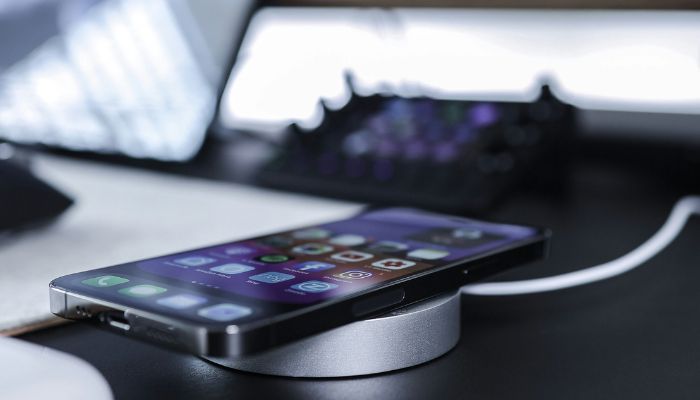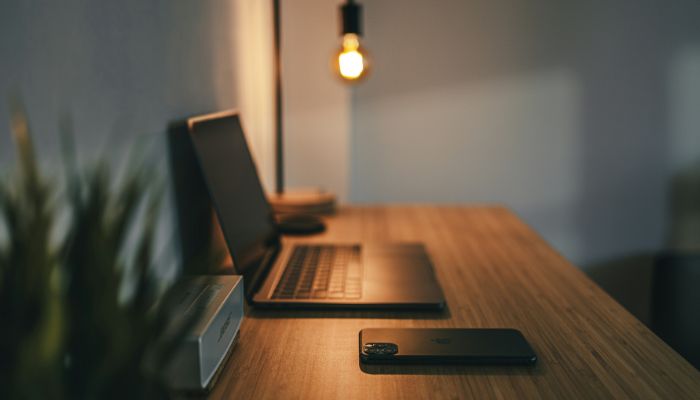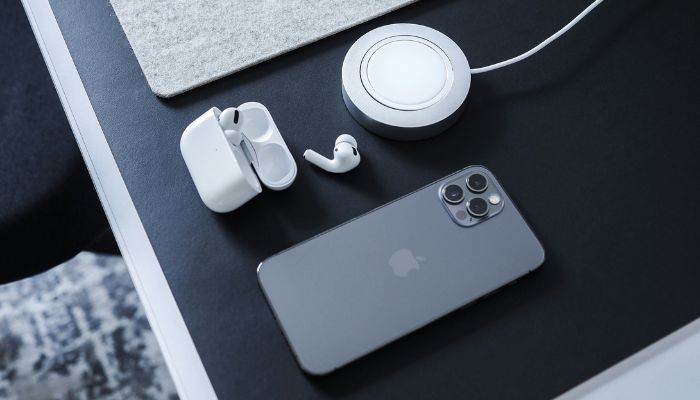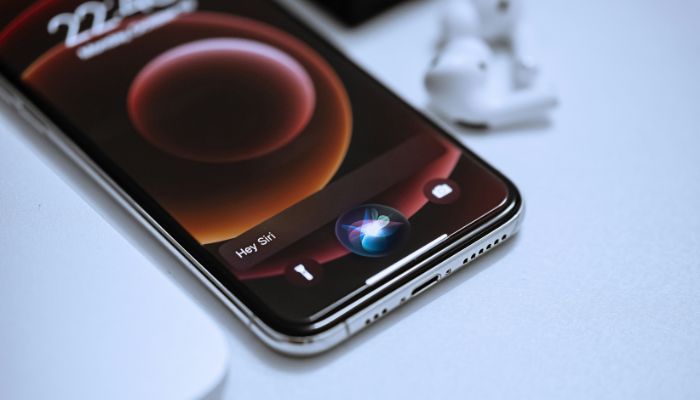
To identify if someone is tracking your iPhone, look for unusual behaviors such as unexpected shutdowns, significant battery drain, and unexplained spikes in data usage. Watch for unfamiliar apps and discrepancies in location history. Tracking methods include GPS, data monitoring, and spy apps. To confirm tracking, check for faster battery drain, lagging performance, unexplained apps, and device overheating.
Enhance security by reviewing privacy settings, limiting app access to location services, and using strong passcodes. Adjusting app permissions and avoiding unsecured networks also help. Understanding these signs and actions can further protect your device and privacy.
Understanding Iphone Tracking
To understand iPhone tracking, you must recognize that modern smartphones, including iPhones, come with advanced GPS and location services. These technologies enable the accurate pinpointing of a device’s location, which can be beneficial for navigation, finding lost devices, or using location-based apps. However, the same capabilities can also be exploited for unauthorized tracking. Following iPhone security tips against hackers is essential to minimize risks and protect your privacy.
To mitigate risks, users should familiarize themselves with their iPhone’s privacy settings. Adjusting these settings can restrict which apps and services have access to location data, thereby enhancing device security. Disabling location services for non-essential apps can be a proactive measure to safeguard personal information.
Monitoring data usage is another key aspect. Unusual spikes in data consumption could indicate that a tracking app is running in the background. Regularly checking data usage can help identify and eliminate potential threats.
Signs Your Iphone Is Tracked

To detect if someone is tracking your iPhone, observe certain telltale signs closely. Recognizing these signs allows you to determine if someone has compromised your privacy. For example, look for these crucial indicators:
- Behavioral changes: Your iPhone might exhibit unusual behavior, such as unexpected shutdowns, slow performance, or apps crashing more frequently. These anomalies can suggest unauthorized activities.
- Battery drain: A significant and unexplained decrease in battery life can indicate that tracking software is running in the background, consuming power continuously.
- Data usage: Be alert to spikes in your data usage. Tracking apps often transmit large amounts of data to remote servers, which can lead to higher-than-normal data consumption.
- Strange apps: Keep an eye out for unfamiliar apps on your device. These could be malicious software installed without your knowledge, designed to monitor your activities.
- Location discrepancies: If your iPhone’s location services show you in places you have not visited, it might be a sign that someone is remotely accessing your location data.
Possible Tracking Methods
Understanding the signs that your iPhone may be tracked is only part of the equation. Equally important is recognizing the various tracking methods that can compromise your device.
- One of the most common methods is GPS tracking, which leverages your iPhone’s built-in GPS capabilities to pinpoint your exact location. Malicious actors can exploit your Location Services settings, allowing them to follow your movements without your knowledge.
- Another prevalent method is data monitoring, where unauthorized parties gain access to your device’s data, such as call logs, messages, and browsing history. Spy apps often work in these situations by being discreetly installed on your iPhone. Once installed, they run in the background, quietly transmitting your data to a third party.
- Network tracking is another technique where your internet activity is monitored through your Wi-Fi or cellular network. This method can reveal a lot about your online behavior, including the websites you visit and the apps you use. Recognizing these tracking methods can help you take necessary precautions to protect your privacy and ensure your device remains secure.
Steps to Confirm Tracking

To confirm whether your iPhone is being tracked, start by examining your device for any unusual behavior or unauthorized changes. Detecting tracking early is crucial for maintaining your tracking security. Begin by scrutinizing the following tracking indicators:
- Battery Drain: A faster-than-usual battery drain might indicate tracking software running in the background.
- Data Usage: Unexplained spikes in data usage can be a sign of data being transmitted to a third-party.
- Performance Issues: Lagging or freezing could be due to tracking software consuming your device’s resources.
- Unknown Apps: Look for unfamiliar apps installed without your consent, as they might facilitate tracking.
- Device Overheating: If your iPhone becomes unusually hot, it could be due to continuous background tracking activities.
Tracking detection requires a keen eye on these subtle signs. Ensure you are vigilant about tracking prevention by regularly checking your device’s settings and installed applications.
To maintain good tracking security, you must be proactive and stay aware of your iPhone’s normal behavior. By following these steps, you can quickly identify if your device is compromised. This awareness allows you to take appropriate actions to safeguard your privacy and prevent unauthorized tracking effectively.
How to Stop the Tracking?

If you suspect someone is tracking your iPhone, take immediate steps to protect your privacy. Start by checking your privacy settings. Go to Settings > Privacy and ensure that only trusted apps have access to your data. This action helps you control which information is shared and with whom, reducing the risk of unauthorized tracking. Additionally, keep your iPhone number hidden on calls to enhance your privacy protection.
Next, scrutinize your location services. Go to Settings > Privacy > Location Services and turn off location access for any apps that do not need it. This limits the ability of unauthorized users to track your physical movements.
Enhancing device security is also crucial. Set a strong, unique passcode and enable Face ID or Touch ID. Regularly updating your iPhone’s software can also prevent security vulnerabilities that might be exploited for tracking.
Reviewing app permissions is another pivotal step. Examine each app’s access rights by going to Settings > Privacy > App Permissions. Revoke permissions that seem unnecessary or suspicious.
Finally, prioritize data protection. To begin with, avoid connecting to unsecured Wi-Fi networks and be cautious about downloading apps from unknown sources. Additionally, back up your data regularly, and consider using encrypted messaging apps for sensitive communications.
Maintaining Your Iphone’s Privacy
Maintaining your iPhone’s privacy is paramount to ensuring your personal data remains secure. By taking proactive steps, you can safeguard against unauthorized access and potential data breaches. Here are essential practices to maintain your iPhone’s privacy:
- Review and adjust privacy settings: Regularly check and configure your privacy settings. This ensures that only necessary apps have access to your personal data.
- Manage location services: Limit which apps can access your location data. Disable location services for apps that do not require it, reducing the risk of being tracked.
- Implement strong security measures: Use a strong passcode, enable Face ID or Touch ID, and activate two-factor authentication to add layers of protection.
- Monitor data protection features: Enable features such as Find My iPhone and iCloud Backup to safeguard your data in case your device is lost or stolen.
- Beware of unauthorized access: Regularly check for suspicious activity on your device and promptly remove any unfamiliar apps or settings.
Conclusion
To ensure an iPhone’s privacy, it is crucial to first understand the mechanisms of tracking, recognize signs of unauthorized access, and identify common tracking methods. Next, confirm whether tracking is occurring by checking device settings and monitoring any unusual behavior. Additionally, to prevent tracking, regularly update your software, review app permissions, and use security features such as two-factor authentication. By taking these steps, you can significantly enhance the security and privacy of your iPhone, thereby safeguarding your personal information from potential threats.